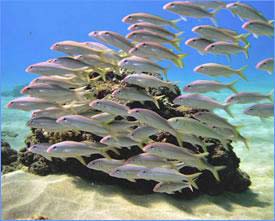 It has a ready to use reference guide on methodological aspects of data (metadata) based on harmonized concepts and methodologies that facilitate international comparison and help in aggregation of statistics to derive meaningful conclusions. The adoption of the methodology suggested in this manual will go a long way in facilitating data aggregation and data comparison both at intra-regional levels, including international levels.
It has a ready to use reference guide on methodological aspects of data (metadata) based on harmonized concepts and methodologies that facilitate international comparison and help in aggregation of statistics to derive meaningful conclusions. The adoption of the methodology suggested in this manual will go a long way in facilitating data aggregation and data comparison both at intra-regional levels, including international levels.
The section on both marine and inland fisheries consists of four chapters and appendices. Chapter I highlights the significance of the sector, need for statistical standards and development of statistical system of the sector. Concepts and definitions are placed in Chapter II. Chapter III presents sources of data and details of methodology being adopted for generating these data. Chapter IV conveys the suggestion for ensuring quality standards. Lastly, appendices include estimation methods, forms and schedules and major resources available in the Indian waters.
Marine fisheries statistics
The marine fisheries statistics not only includes estimates of catch (production) and the effort expended but also information on fleet size craft and types and number of gears used, fisher-folk population, active fishermen, number of people involved in fishery related activities, number of fishing villages, number of landing centres and other infrastructure facilities.
In India, with a long coastline of 8129 km (including the Island territories), it is not possible to completely enumerate all the landing centres along the coastline owing to obvious limitations. The information on total marine fisher-folk, their occupational status and the total fleet size etc. are obtained periodically through a nation-wide census (complete enumeration). The last such census was conducted by CMFRI in the year 2005 on the mainland by the FSI in the island territories. However, the information on production (catch or landings) and the associated fishing effort, that is required on a regular basis for fisheries management and fish stock assessment, is collected by sample surveys.
Some of the salient points from the recommendations on marine fisheries are -
- Strengthening and expansion of the Fishery Data Centre of CMFRI as a centralized National Marine Living Resources Data Centre (NMLRDC).
- Observing the deep involvement of States, Department of Agriculture of the Union Government, ICAR and other public and private organizations, it was recommended to form an Expert Committee to guide the modalities of functioning and to foster linkages and provide advice for an effective and functional system for resources data collection.
- Strengthening of State Departments that were collecting marine fishery statistics with adequate administrative, technical and financial support.
- The system of data collection based on tested statistical design developed by CMFRI be followed by all the States and the data are recorded and maintained in the accepted proforma developed by the workshop.
- Conduct of periodical training to the staff of the State Departments.
- Increase in the sampling coverage.
- Development of computerized information system by CMFRI.
Inland fisheries statistics
Issues and constraints of the existing inland fishery statistical system as per the manual include -
- Unlike marine sector, inland fisheries cannot claim a satisfactory status with regard to data collection;
- Open access system nature of inland open-waters;
- Multiple usages & multiple-ownership;
- Poor understanding of requirements of users;
- Inadequacy in basic database at the state level;
- The data collected from inland fishery resources of different states are sometimes neither comparable nor compilable at central level;
- Unregulated fishing practices;
- Lack of relevant and usable information;
- Rapid shift in biodiversity and fish stock;
- Lack of environmental consideration in open-water fishery management;
- Difficulty in application of policy regulations and integration;
Download the document here -
/articles/fishery-statistics-manual-ministry-statistics-and-programme-implementation